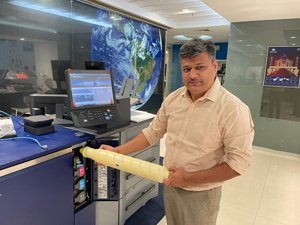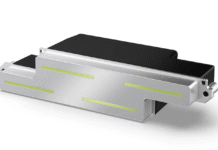
It is more than likely, that the recovery of the digital and offset print (and automobiles) industries will continue to be affected by the global chip shortage. The pent-up demand seems to be there for all the digital and offset brands as the supply constraints of the chip shortage create longer lead times that will affect and dampen the delivery lead time induction of new presses in the 2022-2023 financial year. It has also disrupted the supply of wide-format signage output devices in the past year.
An offset press manufacturer says there are 30,000 chips in a basic 4-color sheetfed press and 50,000 to 60,000 chips in the longer configurations with increased automation. In the case of offset presses, there are logistical on the manufacturing side for options such as curing systems that are normally shipped across continents as well components manufactured in China that are normally shipped from Shanghai. The shortages of containers and the cartelization of shipping prices have also adversely affected the last mile shipping of printing equipment to Indian (and global) buyers over the past year. While the chip shortages seem to affect various manufacturers in waves depending on their requirements, the twin logistical crises are seemingly continuous, especially across Asia.
The recovery of the commercial print market (both offset and digital) depends mainly on the recovery of print volumes. With low demand and low overall volumes, the print prices have sunk to abysmal lows and for the digital press manufacturers who thrive on volumes, increases are key to profitability. This is another instance of wholesale or input prices rising before retail or consumer prices because of low demand.
Useful data shared by Konica Minolta at the launch of its new C7100 and C7090 presses reflected the significant dip in revenues during the two pandemic years. The expected parameters of a recovery in the digital press segments may also serve as a barometer for the recovery of the commercial printing industry as a whole.
The new Konica Minolta C7100 and C7090 presses
Konica Minolta India’s media launch of the Accurio C7100 and C7090 digital presses on 9 March 2022 talked about several incremental enhancements over the previous series of C6100 and the C6085 digital presses. Do these add up to a significant change that might be qualitative in terms of color quality, duty cycles, reliability, and hopefully even in the recurring or variable costs to the customer?
We went over to the KM demonstration center in Gurgaon’s Cyberhub for a look at the new press in the first half of April. We wanted to better understand the dynamics of an industry in which entry-level presses come for Rs. 10 to 35 lakhs and go through the middle range presses from Rs. 50 lakhs to Rs 1 crore, to the high range of presses that start from Rs 2 crore onwards.
The Konica Minolta C7100 and C7090 are a pair of mid-range presses. The main improvements in these machines over the 6100 series are their ability to handle rougher substrates or what is called textured paper. Heavier papers can also be handled with up to 400 gsm paper printed on both sides in one pass or what is called full-duplex printing. Longer sheets for banners and brochures can also be duplex printed – up to 35-inches with the stream feeder option and up to 40-inches with a friction feeder option. The thin paper feeder can only handle paper of 70 gsm. The several new feeder trays are an efficiency improvement.

Photo IPP
The print resolution has also been upgraded to 2400 x 2400 for 4-colors (although there is an apparent 2400 x 3600 resolution effect) with a new Simitri V toner that ostensibly has smaller toner particles. The cleaning of the drum for excess toner particles is performed by the new corona mechanism. Basically what we saw with the naked eye and also with a small microscope, was that the digital print quality is the same in terms of saturation and smoothness as on a multicolor offset press.

Photo IPP
A microscope only reveals the screening pattern – a conventional circular or flower pattern for the offset and a more linear pattern for the C7100 digital output sample. However, a variety of screen patterns can also be implemented by printers.
The new press also contains a new fusing and post-print humidifier that aids in preventing paper curl. Since the press is faster than earlier presses and has a higher resolution, it has a much faster and more robust RIP – with the overall hardware and firmware capable of efficiently handling more data.
The press in the demonstration center has the IQ501 quality optimizer unit, which can be attached to almost any Konica Minolta digital press. The built-in scanner is of extremely high resolution. The optional paper characteristic reader can be used to create paper profiles to store in the machine’s hard disk or to update profiles that are generally used. The paper characteristic reader also verifies the thickness of paper from the lot being used, which can improve quality and decrease wastage – as the current high cost of paper and its wastage is a concern, even for digital printers.
The new C7100 and C7160 presses that are more compact in height and length than the C6100 series are priced at the same level as the series they replace. KM has also maintained the click charge at the same level. Although the company says it is absorbing the costs of the better technology and toners, one has to surmise that it benefits in terms of anticipated customer satisfaction and improved economies of servicing and other consumables such as the drums which are now capable of 600,000 impressions.
Like other KM digital presses, the new presses have full internet connectivity and can be thus operated remotely or configured for automated web to print operations. The digitally controlled finishing options show how various steps can be digitally controlled and synchronized in inline production. However, there are few customers so far of digital presses in the country who find these automated finishing options compelling.












